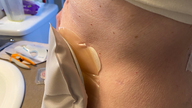Part 2: Changing of Physical Space; Change of Teaching Methods
- Paige Dersham
- Mar 4, 2016
- 3 min read
Before I start part two I would like to share a great blog post that addresses why classroom environment is important. This blog post was written by Erin Klein.
You have a vision for what you and your students should be able to do in your room. You have some ideas about how it might change the way you teach. You have a co-conspirator to help you see your room differently and keep you energized. You have taken lots of pictures of your room as is. And most importantly, I hope, you have begun the process of getting rid of stuff, decluttering is happening, no more hoarding.
If you are saying yes to the above you are ready for a few more steps, now the fun starts! Try these steps:
Ask yourself these questions, and write the answers down:
How does your classroom flow?
Where are the high traffic areas, group meeting locations - do they work?
How does what you teach affect the flow?
This is a great opportunity to get your thought partner or someone with a design eye to come watch you and the kids use your room. It is sometime easier to catch this use and flow if you are not part of the use and flow. They can take notes and maybe even more photos.
Watch your class, and think about these questions as you do:
Where are students transitioning to and from?
Could the “travel time” be shortened?
How much time is lost in transition?
Again this is a great place to get help with another set of eyes to watch the teaching and learning.
This is a tricky one, almost as hard as the decluttering and directly tied to it:
How big is your teacher footprint? This includes your desk, your small group table, any stuff that is yours (may be more clutter)
What items are in the room that kids are not accessing?
I found that when I considered my desk, small group table, bins of stuff (for me - science supplies) teacher footprints can be as large as 1/6 or even 1/5 of the room - FOR ONE PERSON! You are one person, why do you need that much space? This is also the point when you need to give up ownership of the room, it is not yours, it belongs to your learning community, you need to share the space.
Now with all of that data in hand it is time to start planning! Based on what you want for your room and what you have learned about your room. How will you change it? This is where I started drawing new versions of the room, listing what we had to have in the room. I let students rearrange the room so I could see what they thought was important.
There are some useful websites available to start designing new layouts if you like tech tools:
Scholastic Class Setup Tool - very basic, easy to use
Classroom for Teachers - easy to use, has a few more functions
Planner Room Sketcher -very complicated but you can really design

I chose to measure my room and draw it on graph paper, I then created many different configurations, with notes and ideas written all over the page. The drawings and ideas are driven by the initial questions:
What do you wish your physical environment would allow you and your students to do that you cannot do now?
How could your physical environment change your teaching and how kids learn?
The design process also has to take into account your data around room flow, usage, transitions etc.
After you have some design ideas, start to play with the furniture you have to begin to work toward those new configuration ideas. Rearrange, this is a great time for student input. Remember you are going to give up ownership from my room to our room so students need a say. I have found they have interesting insight. Being willing to rearrange and change it up will give you more ideas around what will really work for you and your students. You will probably realize that when student start changing the room a whole new set of classroom norms must be established. Be okay with playing around at this stage, take your time. Next week, part 3 - okay I know what we want how do we get it?



















